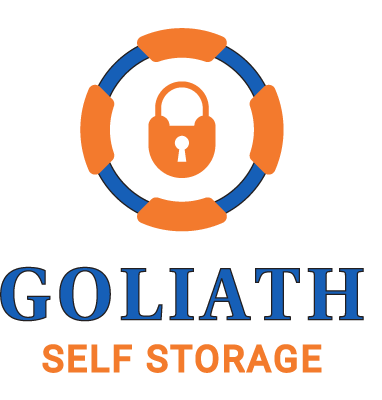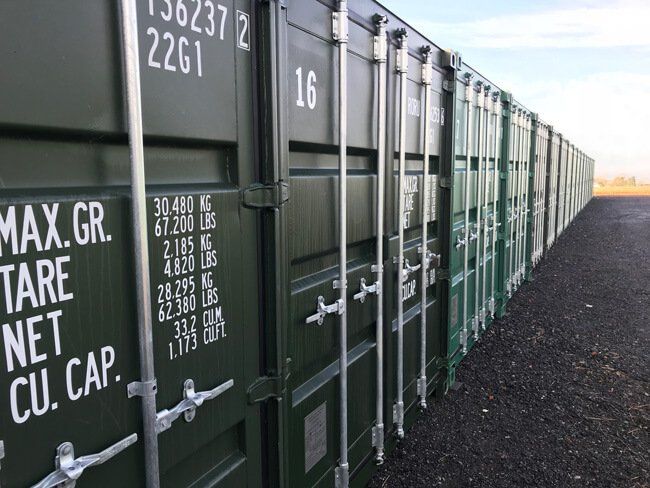
Self-storage units have become an essential part of modern life, offering people and businesses a flexible and handy storage alternative. But how do these storage facilities function, and what can you anticipate if you use one? Let's look at the mechanisms and operations of self-storage facilities.
1. Leasing a Storage Unit
To use a self-storage unit, the first step is to lease the space. This entails deciding on the best unit size for your needs and signing a rental agreement with the storage facility. The agreement specifies the rental terms and circumstances, such as the rental time, payment terms, and facility rules.
2. Choosing the Right Unit Size
Self-storage spaces come in a variety of sizes to fit everything from a few boxes to the contents of a complete household. It is critical to choose the appropriate unit size to avoid wasting space or having insufficient space for your things. The employees at the storage facility can assist you in deciding the suitable size based on your needs and the items you intend to store.
3. Access and Security
The majority of self-storage facilities provide controlled access to their facilities. Access is usually granted by a secure entry gate that requires a unique access code or keycard. This ensures that only authorised personnel can enter the facility, hence increasing security and safety.
4. Security Measures for Units
Individual storage units are protected with locks once inside the storage facility. Customers must supply their own locks, which might be a padlock, cylinder lock, or specialised storage unit lock. To protect the safety of kept belongings, respectable facilities implement methods such as 24/7 video surveillance, on-site supervision, and well-lit premises.
5. Storing Your Belongings
You can begin storing your stuff after renting a storage unit and gaining access. Proper organisation is essential for maximising space and making items easily accessible. Stack objects vertically to take advantage of the unit's height, and provide routes for easy access.
6. Accessibility and Visits
Self-storage facilities usually provide flexible access, allowing you to access your kept belongings during specific hours. Some facilities are open 24 hours a day, while others have set visitation hours. Before renting a unit, it is critical to inquire about the facility's accessibility policy.
7. Payment and Rental Periods
Self-storage spaces are often rented on a month-to-month basis, giving you the flexibility you need for short-term or long-term storage. Payment is normally due at the beginning of each month, and you have the option of paying online, in person, or by automated payment options.
8. Ending the Rental Agreement
When you no longer require the storage unit, you may terminate the rental arrangement by notifying the facility as stipulated in the rental agreement. Remove all of your possessions, clean the unit, and return any access cards or keys.
Self-storage apartments provide a versatile and secure solution for storing personal or corporate things. Understanding the lease procedure, selecting the appropriate unit size, assuring security, and properly organising your belongings are all critical components of making the most of your self-storage experience. You can clean your living space, store belongings during a relocation, or handle surplus inventory for your business with convenience and peace of mind by utilising self-storage units successfully.

Whether you're moving, downsizing, decluttering, or simply need more room, self-storage provides a practical and secure solution for managing your stuff. Choosing the appropriate storage unit size is critical to maximising the value of the storage space and avoiding unnecessary expenses. Here's a complete guide to determining the best size self-storage unit for your needs.
1. Understanding Storage Unit Sizes
Self-storage facilities are available in a variety of sizes, which are commonly measured in square feet. Small lockers to big containers that can hold the contents of a complete house are available. The following are examples of common unit sizes:
5'x5' or 25 sq. ft.: Equivalent to a small closet, suitable for storing boxes, small furniture, or seasonal items.
5'x10' or 50 sq. ft.: Comparable to a walk-in closet, ideal for storing furnishings from a mid-sized bedroom.
10'x10' or 100 sq. ft.: Fits the contents of a one-bedroom apartment, including larger furniture pieces.
10'x15' or 150 sq. ft.: Suitable for a two-bedroom apartment or small house, including appliances and boxes.
10'x20' or 200 sq. ft.: Fits the contents of a small house or apartment, including appliances, furniture, and boxes.
10'x30' or 300 sq. ft.: Spacious enough to accommodate the contents of a three-bedroom house.
2. Assessing Your Storage Needs
Begin by examining the objects you plan to store to establish the suitable storage unit size. Make a thorough inventory of your possessions, categorise them by size and category, and estimate the number of boxes you'll need.
Consider the nature of your products, such as whether they are fragile, temperature sensitive, or require special care. Specific storage conditions may be required for appliances, electronics, furniture, and antiques.
3. Considering Future Needs
Consider whether your storage requirements will alter over time. If you intend to store additional stuff in the future, it's a good idea to rent a somewhat larger unit at first to allow for prospective development. If you plan to minimise your items, a smaller apartment may suffice.
4. Visualizing the Space
Visit the storage facility to see what sizes are available. Many facilities offer sample units or a virtual tour. This will give you a good notion of the available space and assist you in determining the suitable size for your things.
5. Using Online Storage Calculators
Online storage calculators are available at many self-storage facilities. These tools allow you to enter the goods you intend to keep and calculate the size of the required storage unit. It's a useful tool for estimating size based on your specific requirements.
6. Seeking Professional Guidance
Consult the facility manager or the personnel. They have extensive experience assisting customers in selecting the appropriate storage unit size based on their needs. Provide them with information about your items, and they will offer a suitable unit size.
Choosing the proper size self-storage unit is critical for making the most of your storage experience. You can select a unit that accommodates your items comfortably and efficiently by assessing your storage needs, considering future requirements, visualising the space, using internet calculators, and getting professional help. Take the time to plan and select intelligently, and you'll have a storage solution that precisely meets your needs.
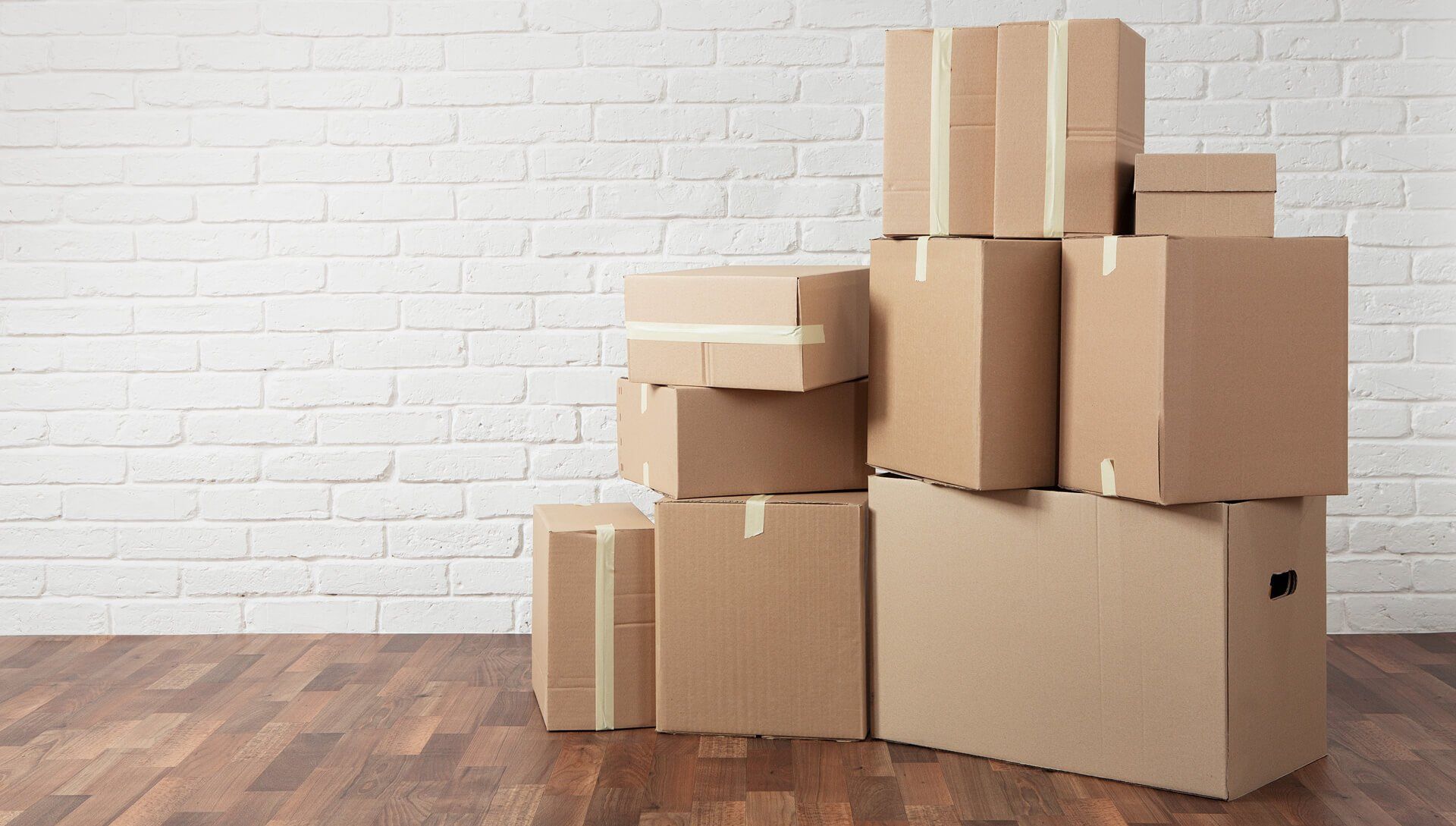
Individuals and businesses are looking for ways to reduce their carbon footprint in today's world, when climate change and environmental effect are becoming increasingly important. Responsible storage practises are an often-overlooked way to make a positive environmental influence. Using self-storage in an environmentally responsible manner can help with sustainability initiatives and the battle against climate change.
1. Optimal Space Management
Self-storage facilities offer a variety of storage options. Individuals can downsize their living areas by managing storage space wisely, choosing for smaller, more energy-efficient dwellings. This decrease in energy use for heating, cooling, and lighting has the potential to significantly reduce overall carbon emissions.
2. Reuse and Repurpose
Individuals who use self-storage can repurpose or reuse products they currently own rather than purchasing new ones. Rather than throwing away items during a move or remodelling, storing them in a self-storage container enables for future use. This minimises the need to purchase new items, reducing manufacturing, packing, and transportation emissions connected with the production of new goods.
3. Extended Lifespan of Items
Individuals can preserve and extend the lifespan of their items by using self-storage. Items stored in a secure, climate-controlled setting are less vulnerable to harm from weather, pests, or wear and tear. This longevity contributes to waste reduction because products survive longer and do not wind up in landfills.
4. Recycling and Donation
When people use self-storage, they frequently sift through their stuff, resulting in decluttering and organisation. This allows you to separate goods for recycling or donation, diverting materials away from landfills. Many self-storage facilities offer relationships with recycling centres or charitable organisations, making it simple for users to dispose of or donate unwanted things in a responsible manner.
5. Energy-Efficient Storage Facilities
The self-storage industry is changing to become more ecologically friendly. Many storage facilities are embracing environmentally friendly practises, such as generating electricity with solar panels, constructing energy-efficient lighting systems, and implementing suitable trash disposal processes. These activities help to reduce carbon emissions caused by energy consumption.
6. Reduced Transportation Emissions
Individuals can cut transportation emissions by using a nearby self-storage facility. Rather than going great distances to access their items in storage, customers can choose a facility near their home, reducing fuel use and greenhouse gas emissions. Furthermore, combining storage trips with other tasks can help to reduce transportation-related carbon emissions.
7. Sharing Economy and Collaboration
The sharing economy model is a developing trend in the self-storage business. Individuals and businesses can share storage spaces, taking only what they require. This collaborative approach encourages resource efficiency, lowering the overall need for storage space and the associated environmental impact.
Self-storage can help to reduce one's carbon footprint when used responsibly. Individuals can help to preserve the environment by using efficient storage practises, repurposing objects, recycling, and utilising energy-efficient storage facilities. It serves as a reminder that even seemingly insignificant actions, such as how we store our stuff, can have a huge positive impact on our planet.
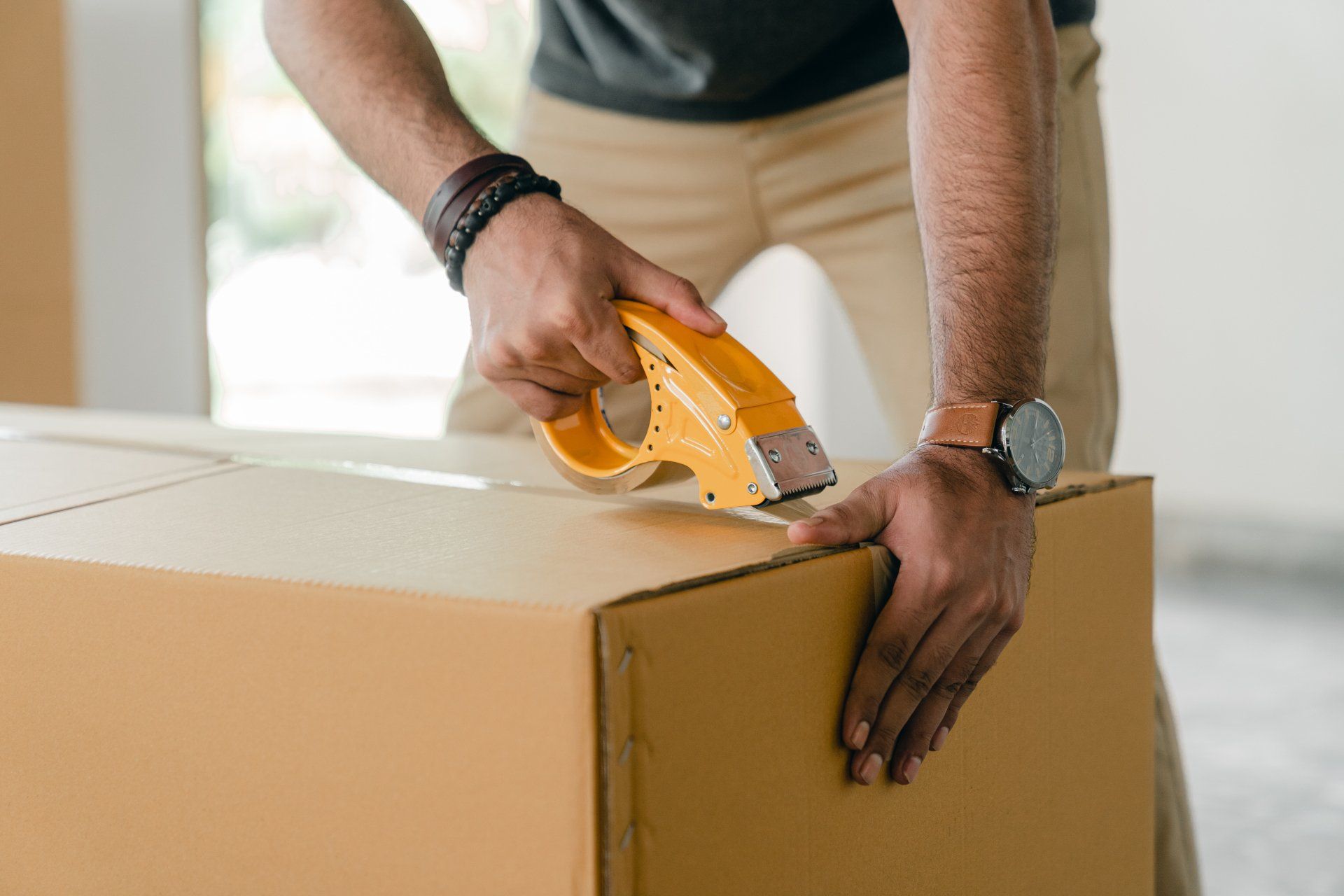
Travelling is a thrilling adventure that allows people to discover new locations, cultures, and experiences. Whether you're going on a short vacation or a lengthy trip, managing your possessions while travelling can be a hassle. This is where self-storage might come in handy to keep your belongings safe and secure while you're away.
Convenience and Peace of Mind
The convenience of using self-storage when travelling is one of the key benefits. Rather than being concerned about the safety of your stuff at home, a self-storage unit provides a secure environment in which you can store your items without anxiety.
Knowing that your belongings are safe and secure might provide you with piece of mind when travelling. It allows you to concentrate on your journey rather than worrying about the safety of your expensive possessions at home.
Storing Seasonal Items
Seasonal things might be stored for frequent travellers or individuals who travel for extended periods of time. If you have seasonal apparel, sports equipment, or other stuff that you won't need while you're gone, storing them in a self-storage facility can be a practical option.
This allows you to free up space in your home and reduce clutter while also guaranteeing that your goods are well-preserved and ready to use when you return.
Cost-Effectiveness
Self-storage can also be a cost-effective solution while travelling, especially when compared to other options such as renting a larger apartment or house specifically for storage. Self-storage spaces exist in a variety of sizes, allowing you to find one that meets both your needs and your budget.
You can hire a unit for the duration of your vacation, ensuring that you only pay for the storage you need. This may be a more cost-effective option than signing a long-term lease for a larger living space solely to accommodate your belongings.
Facilitating a Smooth Move
Self-storage might be a lifesaver for people who need to relocate before or after their trip. It offers a versatile alternative for storing your possessions temporarily throughout the relocation time. If you're downsizing or renovating your new home, a self-storage facility might act as a bridge to help you get settled.
You can focus on organising and settling into your new home without the added burden of handling a huge volume of stuff straight immediately if you store your items in a self-storage facility.
Business Travel Storage Needs
Business travellers, particularly those who are frequently on the go, frequently have difficulties in maintaining their personal possessions. Self-storage can meet these objectives by providing a secure and organised location to store items such as company documents, office equipment, and even personal effects, allowing for a seamless balance of work and travel.
Using self-storage when travelling provides a number of advantages that appeal to a variety of demands and conditions. Self-storage facilities can be a great asset for travellers for a variety of reasons, including convenience and peace of mind, cost-effectiveness, and facilitating smooth transitions. Consider using self-storage facilities on your next vacation to improve your travel experience and simplify your life while away from home.

1. Smart Access and Security
Modern self-storage facilities are embracing smart technology to streamline access and bolster security. Smartphone apps, digital locks, and biometric authentication are being integrated to offer customers convenient and secure ways to access their units. This technology not only enhances user experience but also minimizes the risk of unauthorized entry.
2. Contactless Rentals and Payments
The COVID-19 pandemic accelerated the adoption of contactless solutions across various industries, including self-storage. Many facilities now offer online rental options, allowing customers to choose, book, and pay for units remotely. This contactless approach minimizes physical interactions and offers a level of convenience that resonates with today's tech-savvy consumers.
3. Climate Control and Specialty Storage
Innovations in climate control technology have revolutionized the way delicate and valuable items are stored. Climate-controlled units maintain consistent temperature and humidity levels, ensuring the preservation of sensitive items such as artwork, wine collections, and electronics. This specialty storage option caters to a diverse range of storage needs.
4. Robotic Retrieval Systems
Some self-storage facilities are adopting automated retrieval systems that use robotics to fetch and deliver items from storage units. This eliminates the need for customers to navigate through aisles and haul heavy items. The integration of robotics not only saves time but also reduces the physical strain on both customers and facility staff.
5. Sustainable Practices
Eco-consciousness is influencing every industry, including self-storage. Facilities are implementing green initiatives such as solar panels, energy-efficient lighting, rainwater harvesting, and recycling programs. By minimizing their environmental impact, these facilities align with the growing demand for sustainable solutions.
6. Virtual Reality Tours
Visualizing storage units can be challenging, especially when customers are making decisions remotely. Virtual reality (VR) technology is being employed to provide virtual tours of storage units, giving customers an immersive experience that helps them choose the right size and layout for their needs.
7. On-Site Service Offerings
Some self-storage facilities are expanding their services beyond storage units. They offer co-working spaces, package acceptance services, and even workshops or classes. These value-added offerings create a community-oriented atmosphere and establish the facility as more than just a storage space.
8. Data-Driven Insights
Advanced analytics and data-driven insights are being applied to optimize the management of self-storage facilities. These insights help facility managers understand occupancy patterns, customer behaviour, and other factors that can improve operational efficiency and customer satisfaction.
9. Sustainable Materials and Design
Innovative facility design is incorporating sustainable building materials and energy-efficient layouts. Green roofs, natural lighting, and energy-efficient insulation contribute to environmentally friendly structures that blend seamlessly with their surroundings.
Through these inventive innovations, the self-storage business is witnessing a dramatic transition. These innovations are transforming the way customers engage with storage solutions, from smart technology to sustainable practises. Customers should expect improved convenience, security, and flexibility as facilities continue to change and adapt, making the storage experience smooth and modern.
1. Expanding Creative Horizons
For hobbyists, the need for space to explore their creativity is paramount. Self-storage offers a dedicated area to work on projects, free from the constraints of limited room or the fear of making a mess. Whether it's painting, woodworking, crafting, or any other hands-on pursuit, having a designated space can elevate the quality and scope of your creative endeavours.
2. Organized Storage Solutions
Hobbies often come with a plethora of supplies, tools, and materials that can clutter up living spaces. Self-storage provides a convenient solution for storing these items in an organized manner. Instead of struggling to find a place for everything, hobbyists can utilize storage units to neatly arrange their materials, ensuring easy access whenever inspiration strikes.
3. Preserving Valuable Collections
Collecting is a popular hobby that requires meticulous care and attention to detail. Whether you're collecting rare books, vintage toys, or antique memorabilia, self-storage units offer an optimal environment to protect and preserve your valuable items. Climate-controlled units help prevent damage from temperature fluctuations, humidity, and pests, ensuring your collections remain in pristine condition.
4. Seasonal Hobbies Made Easy
Some hobbies are heavily influenced by the changing seasons. Skiing, snowboarding, surfing, and gardening are just a few examples. Rather than allowing equipment and gear to take up valuable space during the off-season, hobbyists can utilize self-storage to safely stow away these items until they're ready to be enjoyed again.
5. Hobby-Specific Equipment
Certain hobbies require specialized equipment that may not be suitable for home storage. From large canvases to power tools, self-storage offers a practical solution for keeping these items secure and accessible. This allows hobbyists to engage in their passions without the limitations of space constraints.
6. Flexibility and Adaptability
Hobbies are dynamic and can evolve over time. As you explore new interests or dive deeper into existing ones, your storage needs may change. Self-storage provides the flexibility to adjust your storage space based on your evolving requirements, ensuring that you always have the room you need for your projects and materials.
7. Separation of Personal and Hobby Spaces
Maintaining a healthy work-life balance is essential, even when it comes to hobbies. Having a separate space for your hobby-related activities allows you to switch between your personal and creative realms effortlessly. This separation can contribute to reduced stress and enhanced focus, improving both your productivity and the quality of your leisure time.
8. Community and Collaboration
Self-storage facilities often foster a sense of community among tenants. Hobbyists can connect with fellow enthusiasts, sharing ideas, tips, and experiences. This collaborative environment can lead to new insights, friendships, and even potential collaborations on joint projects.
Hobbies are extremely valuable in our life because they provide an opportunity for self-expression, personal growth, and relaxation. Self-storage is a critical facilitator for hobbyists, providing them with the space, organisation, and independence to fully embrace their interests. Whether you're an artist, collector, builder, or adventurer, self-storage allows you to follow your interests without regard for space, ensuring that your creative journey remains limitless and inspiring.
1. Flexible Space Expansion
One of the primary ways self-storage aids businesses is by offering a flexible solution for space expansion. Whether you're a small startup with limited office space, an online retailer needing to store excess inventory, or a service-based company with seasonal equipment, self-storage units provide the extra space required without the need for committing to long-term leases or costly office renovations.
2. Inventory Management and Seasonal Needs
For retail businesses, managing inventory efficiently can be a logistical puzzle, especially when dealing with seasonal fluctuations in demand. Self-storage offers a solution by providing a dedicated space to store excess inventory during peak seasons and free up valuable storefront or warehouse space during slower periods. This adaptability allows businesses to optimize their space for maximum efficiency throughout the year.
3. Cost-Effective Solutions
Renting additional office or warehouse space can be a substantial financial commitment. Self-storage, on the other hand, offers a cost-effective alternative. Businesses can avoid the overhead expenses associated with leasing larger spaces, utility bills, and property maintenance, all while enjoying the benefits of a secure and accessible storage environment.
4. Document and Archive Management
Businesses often accumulate a significant amount of paperwork and documents over time. Self-storage provides a secure solution for storing important records, archives, and legal documents without cluttering up office spaces. This not only enhances organization but also ensures that sensitive information is stored in a controlled and confidential environment.
5. Equipment and Asset Storage
Many businesses require specialized equipment, tools, and assets that are only used periodically. Self-storage allows businesses to keep these items safe and accessible, reducing the need for large on-site storage areas. This is particularly beneficial for construction companies, event planners, and other businesses that rely on specific tools for certain projects.
6. E-Commerce and Online Retail
The rise of e-commerce has transformed the way businesses operate, with many entrepreneurs running their ventures from home. Self-storage supports e-commerce businesses by offering a place to store inventory, packaging materials, and equipment, while maintaining the convenience of home-based operations.
7. Business Continuity and Disaster Recovery
Business continuity planning is crucial, and self-storage can play a role in ensuring your business is prepared for unforeseen circumstances. Storing backups of essential data, equipment, and inventory off-site can be a strategic move to safeguard against natural disasters, theft, or other disruptions.
8. Transitional Phases
Businesses often go through transitional phases such as relocating, downsizing, or expanding. Self-storage eases these transitions by providing a temporary space to store belongings while minimizing disruption to daily operations.
Businesses of all sizes and industries, from startups to established firms, can benefit from the advantages that self-storage provides. Self-storage has become a vital instrument in the armoury of modern organisations due to its flexibility, cost-effectiveness, and ability to meet a wide range of operational needs. Businesses may optimise their resources, react to changing conditions, and focus on what actually matters: development, innovation, and success by embracing self-storage options.
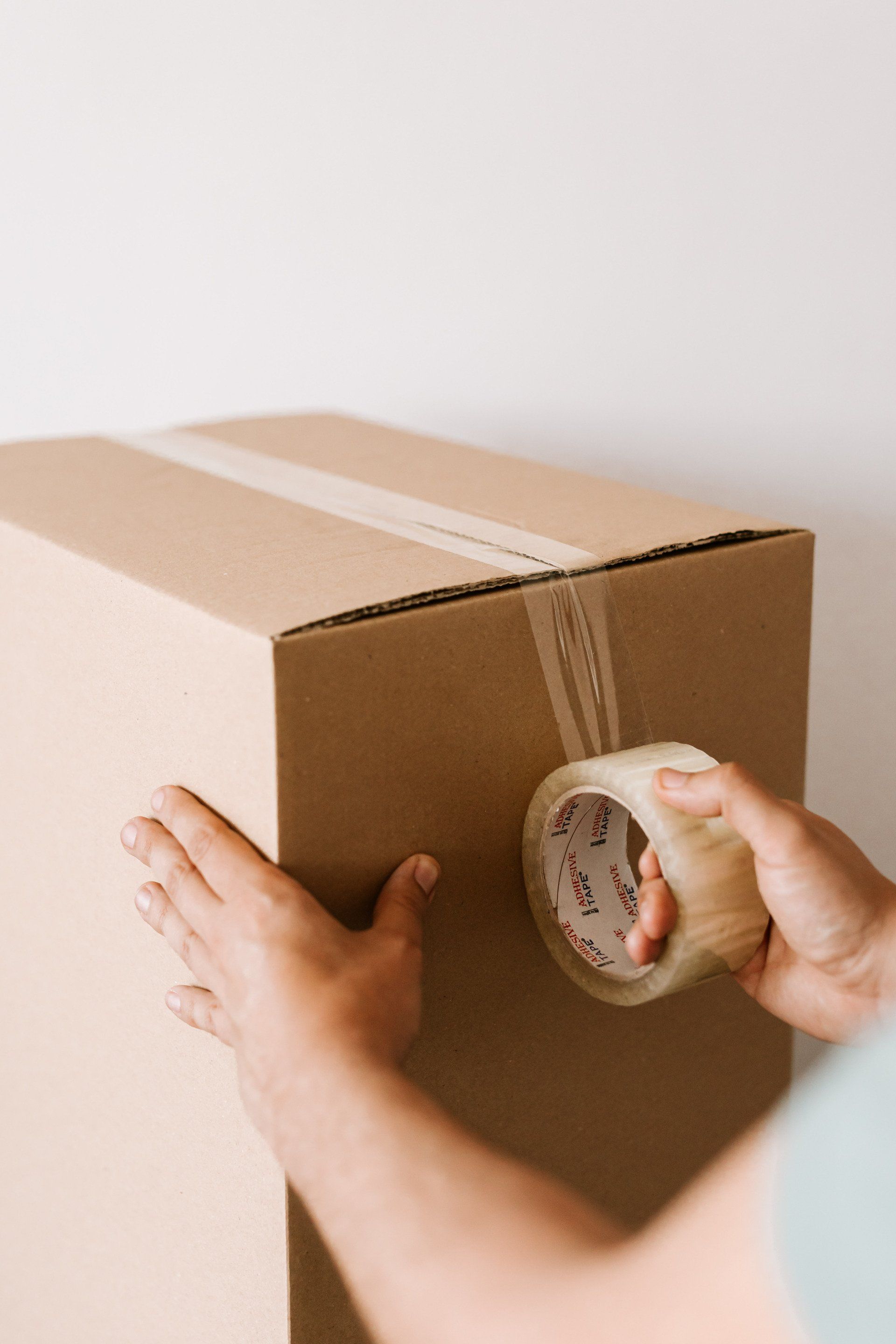
Cardboard Boxes: Versatility and Tradition
For decades, cardboard boxes have been a staple of packing and moving. They are well-known for their low cost, wide availability, and adaptability. Here are some important considerations to consider while choosing cardboard packing boxes:
Economical Alternative: Cardboard boxes are typically less expensive than plastic alternatives. They are widely available at a variety of retail and online outlets, making them accessible to anyone planning to use self-storage facilities.
Recyclability : Because cardboard boxes are recyclable, environmentally aware people may choose them. Cardboard is biodegradable and easily recyclable, lowering your carbon footprint while moving.
Customizability : For organisation and identification, cardboard boxes can be simply labelled, written on, or even embellished. This makes them an excellent solution for anyone who value organisation and clarity in their storage.
While cardboard boxes can provide enough protection for many products, they are more susceptible to damp, vermin, and physical damage than plastic. If cardboard boxes are stored in a moist environment, they may deteriorate and jeopardise the safety of your belongings.
Weight Restriction : Cardboard boxes have a lower weight limit than their plastic counterparts. Overloading cardboard boxes with large things can cause tears, breakage, or collapse, potentially causing damage to the contents.
Plastic Boxes: Strength and Security
Plastic boxes have grown in favour in recent years due to their increased durability and protection. They provide the following features, which can be useful for individuals looking for a more robust storage solution:
Plastic boxes are made to endure a variety of environmental conditions such as moisture, pests, and temperature swings. They are less prone to tear, crack, or collapse, protecting your items, especially if they will be stored for a lengthy period of time.
Water-Resistance : One of the most notable benefits of plastic boxes is their resistance to water. Because of this, they are ideal for keeping objects in places prone to humidity, leaks, or wetness.
Security : Plastic boxes are frequently equipped with strong latches or locking mechanisms, which can improve the security of your stored belongings. This is especially critical if you're storing anything valuable or sensitive.
Stackability : Plastic boxes are meant to stack neatly on top of one another, making the most of the available space in your storage unit. This tool is very beneficial when you need to make the most of your limited space.
While plastic boxes provide stronger protection, they can be more expensive than cardboard boxes. If you need to keep a big number of objects, the expense of plastic boxes can soon add up.
Making a Decision
The decision between plastic and cardboard self-storage packing boxes is ultimately determined by your personal demands and priorities. If you value cost, recyclability, and lightweight things, cardboard boxes may be the superior option. Plastic boxes, on the other hand, may be the best option for increased protection, durability, and security.
When making your decision, keep the kind of the objects you're storing, the environment in which they'll be housed, and your budget in mind. In some circumstances, combining cardboard and plastic boxes may be the optimum option, allowing you to capitalise on each type's qualities.
In conclusion, the choice between plastic and cardboard self-storage packing boxes should be a well-considered one. By weighing the pros and cons of each option and factoring in your specific needs, you can ensure that your belongings are stored in a manner that preserves their condition and facilitates easy retrieval when needed.

Self-storage facilities are a convenient and practical solution for individuals and businesses alike, offering a secure space to store belongings, including furniture. Whether you're moving, downsizing, or just need some extra space, proper furniture storage is essential to ensure your valuable pieces remain in good condition and are easily accessible when needed. Here are the top five tips for storing furniture in self-storage:
1. Clean and Prepare the Furniture
Before placing any piece of furniture in storage, it's crucial to clean and prepare it properly. Dust and dirt can accumulate during regular use, and these particles can potentially cause damage over time. Start by dusting off the furniture thoroughly and then wipe it down with a soft cloth and mild cleaning solution.
For wooden furniture, consider applying a coat of furniture polish or wax to provide a protective layer. For fabric or upholstered pieces, vacuuming and spot-cleaning any stains will help maintain their appearance. By preparing your furniture before storage, you can prevent dirt and grime from setting in and keep your items looking their best.
2. Disassemble Larger Furniture Items
Maximize the space in your self-storage unit by disassembling larger furniture items whenever possible. Beds, tables, shelves, and other large pieces can often be taken apart, making them easier to transport and store. Keep track of screws, bolts, and other small parts by placing them in labeled bags or containers and taping them to the furniture they belong to. This organization will save you time and frustration when it comes to reassembling your furniture later.
Remember to keep the assembly instructions handy if available, as they will be invaluable when you're ready to put everything back together. Taking these extra steps will not only save space but also prevent potential damage during transportation and storage.
3. Use Proper Furniture Covers and Wrapping
When storing furniture, it's essential to protect it from dust, moisture, and other potential hazards. Invest in high-quality furniture covers, blankets, or plastic wrap to shield your items from environmental elements. Avoid using plastic directly on wooden or upholstered furniture, as it can trap moisture and cause mold or mildew to develop.
For wooden furniture, breathable materials like cotton covers work best, as they allow air to circulate while still offering protection. Additionally, use moving blankets or pads to prevent scratches and dings during transportation and while in storage.
4. Elevate Furniture off the Ground
Prevent potential damage from flooding or moisture by elevating your furniture off the ground within the self-storage unit. Place wooden pallets or plastic risers under the furniture legs to create a barrier between the items and the floor. This practice is especially crucial if you live in an area prone to heavy rains or if you are storing your furniture for an extended period.
Elevating the furniture will ensure proper air circulation and minimize the risk of moisture-related issues, such as warping or mold growth. A dry and well-ventilated storage space will help preserve your furniture in optimal condition.
5. Organize with Accessibility in Mind
Lastly, organize your self-storage unit with accessibility in mind. Place frequently used items towards the front for easy access. Keep a clear pathway through the unit so you can reach any piece of furniture without having to move everything around. Label boxes and use a basic inventory system to quickly identify where specific items are located.
By staying organized, you'll save time and effort when retrieving items from storage. Regularly check on your furniture to ensure it remains in good condition and make any necessary adjustments to the storage arrangement if needed.
In conclusion, proper furniture storage in a self-storage facility requires some preparation and planning, but it's well worth the effort to preserve the condition and longevity of your valuable pieces. Cleaning, disassembling, using protective covers, elevating off the ground, and organizing for accessibility are the top five tips to keep in mind. By following these guidelines, you can rest assured that your furniture will be safe, secure, and ready for use whenever you need it.

When you find yourself in need of extra space to store your belongings, a self-storage facility can be a reliable and convenient solution. Whether you're moving to a new home, decluttering, or need temporary storage for your business, selecting the right self-storage provider is essential to ensure the safety and accessibility of your items. With numerous options available, it can be challenging to determine the best fit for your needs. Here are some essential factors to consider when choosing your self-storage provider:
1. Location and Accessibility: One of the first considerations when selecting a self-storage provider is the location of the facility. Opt for a facility that is conveniently located near your home or place of business. This will save you time and effort when accessing your belongings, especially if you need to retrieve or store items frequently. Additionally, consider the accessibility of the facility, including operating hours. Choose a provider with extended hours or 24/7 access if you require flexibility in accessing your storage unit.
2. Security Measures: The security of your stored items should be a top priority. Look for a self-storage provider that employs robust security measures to protect your belongings. Some essential security features to consider include 24/7 video surveillance, access control systems, well-lit premises, and on-site personnel. Additionally, inquire about any additional security options, such as individual unit alarms or secure locks.
3. Unit Size and Features: Assess your storage needs accurately to determine the appropriate unit size for your belongings. A reputable self-storage provider will offer various unit sizes to accommodate different storage requirements. It's better to choose a slightly larger unit than to cram your items into a small space, risking damage to your belongings and limiting access. Furthermore, inquire about additional features that the facility may offer, such as climate control for temperature-sensitive items, drive-up access for easy loading and unloading, and adequate ventilation to prevent moisture-related issues.
4. Cleanliness and Maintenance: A well-maintained and clean storage facility is indicative of a provider that cares about its customers and their belongings. When visiting potential self-storage providers, pay attention to the cleanliness and general upkeep of the premises. Clean facilities are less likely to attract pests and keep your items in better condition. Additionally, well-maintained facilities are more likely to address any potential issues promptly, ensuring a pleasant storage experience.
5. Reviews and Recommendations: Before making a decision, research the self-storage providers you are considering by reading online reviews and seeking recommendations from friends, family, or colleagues. Customer reviews can offer valuable insights into the quality of service, security, and overall satisfaction of past and current clients. Look for providers with a history of positive reviews and customer satisfaction.
6. Insurance Options: While self-storage facilities typically implement security measures, it's essential to have insurance coverage for your stored items. Check if the self-storage provider offers insurance options or if your existing homeowner's or renter's insurance policy covers items stored off-site. Having adequate insurance will provide peace of mind in case of any unforeseen events.
7. Pricing and Contract Terms: Comparing pricing and contract terms among different self-storage providers is crucial to finding the best value for your needs. Look for transparent pricing with no hidden fees, and consider any discounts or special offers the provider may have. Be sure to understand the terms of the contract, including the rental period, payment schedule, and any penalties for early termination.
8. Customer Service: Excellent customer service is a vital aspect of any service provider, including self-storage facilities. Friendly and knowledgeable staff can assist you with any questions or concerns you may have, making the storage process smoother and more enjoyable. Choose a self-storage provider that prioritizes customer satisfaction and is willing to provide support when needed.
In conclusion, choosing the right self-storage provider requires careful consideration of various factors. By evaluating the location, security measures, unit size, cleanliness, customer reviews, insurance options, pricing, and customer service, you can make an informed decision that meets your storage needs and ensures the safety and accessibility of your belongings. Take the time to research and visit different facilities to find the one that best aligns with your requirements, giving you peace of mind and a positive storage experience.


